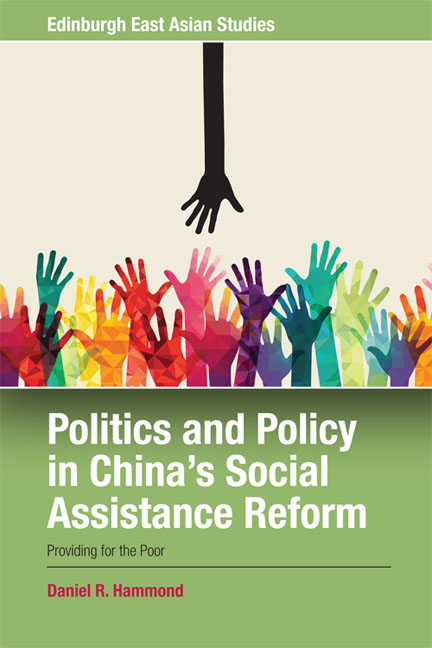Book contents
- Frontmatter
- Contents
- Acknowledgements
- Note on Chinese and Translations
- Glossary of Terms and Abbreviations
- Introduction
- 1 Historical Background to Dibao and the Question of Poverty in China
- 2 Urban Dibao: Emergence and Transition to National Policy, 1992–1999
- 3 Urban Dibao: The Resolution of Unwanted and Unintended Outcomes, 1999–2003
- 4 Rural Dibao: The Countryside and Fragmentation
- 5 Institutionalisation? Achieving Policy in a Fragmented State
- Conclusion
- Appendix: Interview List
- Bibliography
- Index
2 - Urban Dibao: Emergence and Transition to National Policy, 1992–1999
Published online by Cambridge University Press: 18 December 2019
- Frontmatter
- Contents
- Acknowledgements
- Note on Chinese and Translations
- Glossary of Terms and Abbreviations
- Introduction
- 1 Historical Background to Dibao and the Question of Poverty in China
- 2 Urban Dibao: Emergence and Transition to National Policy, 1992–1999
- 3 Urban Dibao: The Resolution of Unwanted and Unintended Outcomes, 1999–2003
- 4 Rural Dibao: The Countryside and Fragmentation
- 5 Institutionalisation? Achieving Policy in a Fragmented State
- Conclusion
- Appendix: Interview List
- Bibliography
- Index
Summary
Introduction
As the historical description of the development of dibao in the previous chapter has shown, the emergence and implementation of the urban MLG was a process that does not necessarily fit with the established discourse on social assistance policy in China. Rather the process was messy and involved numerous actors at central and local levels who interacted over an extended period of time, seeking particular outcomes and being enabled or frustrated by the structure of the state. The process of the urban MLG's national implementation was not just the announcement of the 1997 Circular or the 1999 Regulations but also the process leading up to these documents being published and enforced. This took place in the context of China's fragmented authoritarian political structure and this, together with the actions of certain key actors, had a profound impact on the shape of the MLG as well as establishing a number of problems that subsequently would need to be dealt with. Two processes need to be addressed in order to understand the problems which developed later. These are the spread of the MLG between 1994 and 1997 and the implementation of the MLG between 1997 and 1999. Both these processes were subject to the FA of China's politics and exhibited outcomes that would be expected for a policy that emerged in a bureaucratic structure lacking in political authority and fiscal resources.
This chapter sets out the case that in order to understand what the MLG is now it is essential to understand where it came from, what political values it was attached to and that underpin it, and how its implementation was brought about. Initially, when it emerged in Shanghai the urban MLG was a product of the space that exists within the Chinese system to innovate and experiment when the higher levels of authority allow it. As it moved from being a local innovation to a national policy the way the MLG was discussed changed, and the state structure that had fostered its development became a challenge to its spread. The explicit linking of the MLG to the cause of reform and social stability suggest that the policy had different goals to alleviating poverty.
- Type
- Chapter
- Information
- Politics and Policy in China's Social Assistance ReformProviding for the Poor?, pp. 46 - 66Publisher: Edinburgh University PressPrint publication year: 2018

